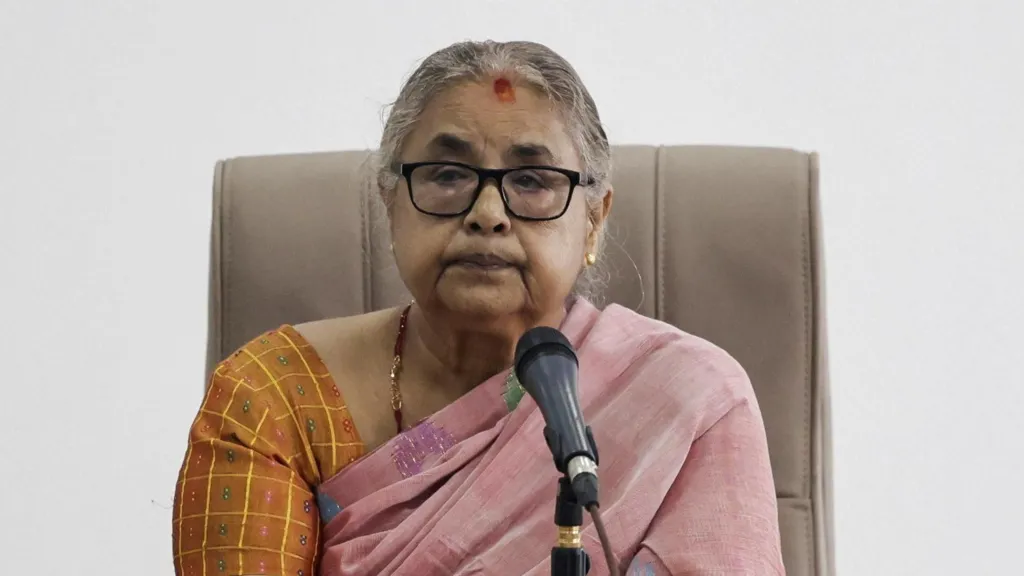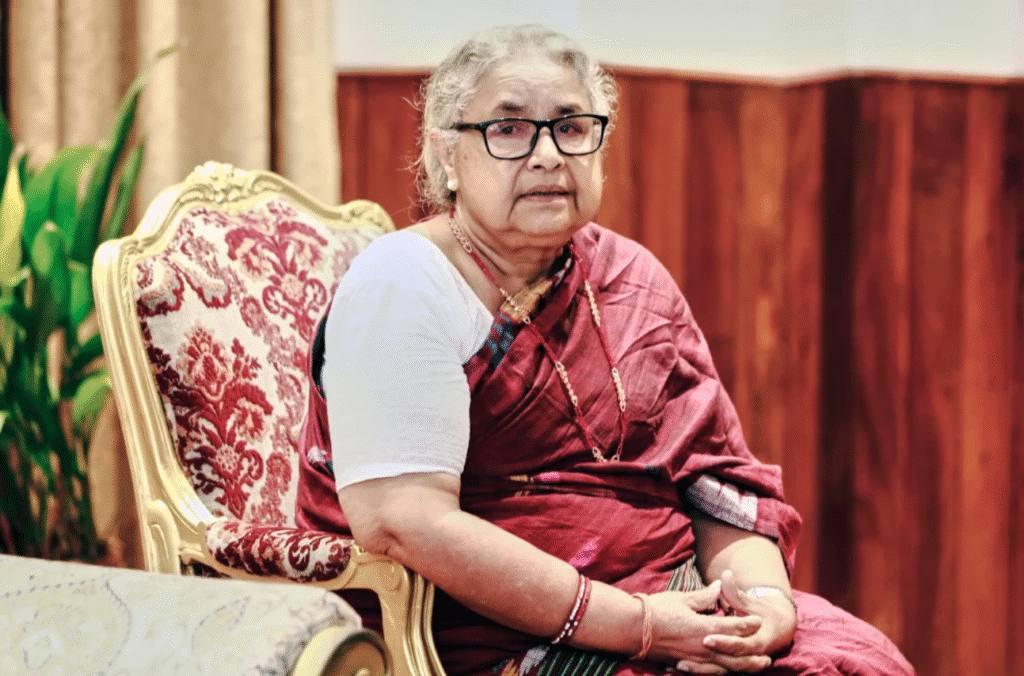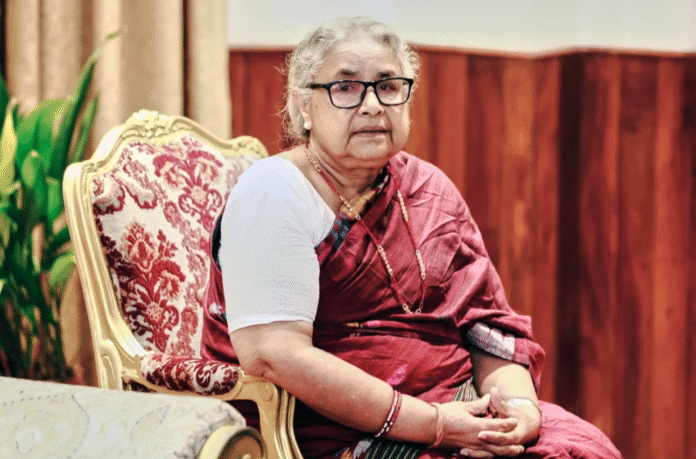Nepal Interim Prime Minister: A Temporary Role With Big Challenges
The newly appointed Nepal interim prime minister, Sushila Karki, has vowed to remain in power for no longer than six months. Her rise to office comes at one of the most turbulent moments in the nation’s modern political history, with anti-corruption protests shaking the foundation of its young democracy.
Karki, who was sworn in on Friday, made it clear during her first public address that she never sought the position. Instead, she accepted it after immense pressure from protest leaders and voices on the streets. “I did not wish for this job,” she said, “but I was compelled to accept due to the people’s demand.”

Nepal Interim Prime Minister Promises Six-Month Term
Karki emphasized that her tenure would not exceed six months. She pledged to hand over authority to the newly elected government that will emerge after the March 5 elections. Her message was simple: she views herself as a caretaker, not a long-term powerholder.
This clear deadline is intended to reassure citizens who fear the rise of authoritarianism following weeks of chaos. It also reflects the demands of the so-called “Gen Z” protest movement, which has pushed strongly for accountability and democratic transparency.
Nepal Interim Prime Minister and the Gen Z Movement
The protests that propelled Karki to power were unlike any Nepal had seen before. Sparked by the government’s ban on social media platforms, demonstrations erupted on September 8 and quickly escalated.
Over two days, frustrations boiled over into violence. Politicians’ homes were vandalized, and parliament itself was set on fire. By the end of the clashes, at least 72 people had been killed, including three police officers.
The protesters, largely from Nepal’s younger generations, demanded the end of corruption, greater economic equality, and stronger governance. According to Karki, “We have to work according to the thinking of the Gen Z generation.”
The Nepal interim prime minister is now seen as the bridge between disillusioned youth and Nepal’s political elite.
Nepal Interim Prime Minister Faces Daunting Challenges
Despite her clean image and respected background as a former Supreme Court chief justice, Sushila Karki’s interim government is stepping into a storm. The challenges ahead are monumental:
-
Restoring law and order after weeks of violent unrest.
-
Rebuilding parliament and other government buildings destroyed in protests.
-
Reassuring citizens who fear Nepal’s democracy could be derailed.
-
Engaging Gen Z protesters, who remain skeptical of political leaders.
-
Balancing governance and reform within a very limited six-month timeline.
Karki acknowledged the pain caused by the destruction, saying she felt “ashamed” that Nepali citizens were responsible for damaging essential national structures.
Nepal Interim Prime Minister and Her Controversial Past
While Karki is widely regarded as an incorruptible figure, her past has not been free of controversy. During her nearly 11-month tenure as chief justice, she faced an impeachment attempt that divided political circles.
This history makes her both a symbol of independence and a target of criticism. Her appointment as Nepal interim prime minister is seen by some as a compromise, a figure respected enough to calm tensions but not powerful enough to reshape the political system in her own image.
Nepal Interim Prime Minister: Public Reaction
Public opinion on Karki’s leadership is mixed but cautiously hopeful. Protest leaders welcomed her appointment as a temporary solution but emphasized that structural reforms must follow.
Ordinary citizens are relieved that someone with a reputation for integrity is at the helm, but skepticism lingers about whether she can truly satisfy the demands of a frustrated population in just six months.
Nepal Interim Prime Minister in a Fragile Democracy
Nepal’s political system remains fragile. After years of conflict and the establishment of a new constitution in 2015, the country has struggled to stabilize its democratic order.
The unrest that brought Karki to power shows the deep frustrations over corruption and inequality that remain unresolved. The role of the Nepal interim prime minister will therefore be crucial, not only for restoring calm but also for ensuring that the upcoming elections are seen as fair and credible.
Nepal Interim Prime Minister: International Attention
The international community is closely watching events in Nepal. Neighboring India and China, both of which have strong interests in the region, are monitoring the stability of the country. Meanwhile, Western observers view Nepal as a test case for how fragile democracies handle mass protests and demands for reform.
Karki’s clean reputation makes her a potentially reassuring figure for foreign allies. However, her limited timeframe means global partners are likely to reserve judgment until after the March elections.

Nepal Interim Prime Minister: Looking Ahead
The coming six months will test Sushila Karki’s leadership like never before. Her government must:
-
Ensure free and fair elections.
-
Rebuild trust with a disillusioned public.
-
Keep protests under control without undermining democratic freedoms.
-
Lay the groundwork for long-term anti-corruption reforms.
Whether she succeeds will determine if her short tenure is remembered as a stabilizing moment or as a missed opportunity in Nepal’s fragile democratic journey.
Conclusion: Nepal Interim Prime Minister’s Six-Month Pledge
The appointment of Nepal interim prime minister Sushila Karki marks a turning point in the country’s crisis. With a clear promise to step down after six months, her leadership represents both a temporary solution and a major gamble.
If she can restore order, rebuild trust, and deliver credible elections, her name may be remembered as the leader who safeguarded Nepal’s democracy in its darkest hour. But failure could plunge the nation into even deeper instability.
For now, all eyes are on Kathmandu, where history is being written in real time.

